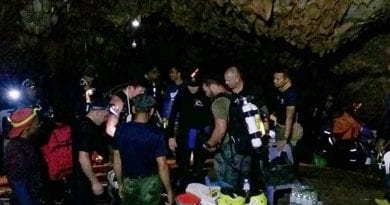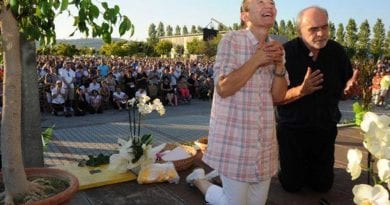Our Lady of Fatima: How Mary Intervened to Save a World in Crisis
Follow Mystic Post on Facebook
By Craig Turner for Mystic Post
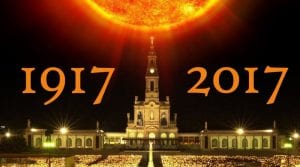
The incredible story of the apparitions at Fatima begins not in 1917, but in the middle of the 19th century. The following article (in three parts) explains the amazing back story of the apparitions and the conclusion of these most amazing appearances.
* * *
Tours, France
In 1843 a young Carmelite nun named Sr. Mary of St. Peter makes the astonishing claim that Jesus has begun appearing to her, and upon telling her superior, is met with a certain skepticism. In the first revelation Jesus tells her that she should always honor both Jesus and Mary, and to never separate the two. In 1846 Jesus allegedly warns her of an approaching storm: “the malice of revolutionary men.” The following year, on March 14, he appears again to her, this time stating that a society known as the “communists” was working secretly to spread through society. “Oh, if you only knew their secret and diabolical plots and their anti-Christian principles!” he exclaims to her. To destroy their work, Jesus gives her a special prayer and devotion to be delivered to the bishop, who is to promote the devotion and thus destroy the supernatural foundations of the group. The bishop, however, does not spread the devotion given to her, and despite future visits by Jesus, who urgently expresses the need for swift action, her revelations remain largely unknown. The devotion and the notes of her revelations can be found in the fascinating book The Golden Arrow (Tan Books). Finally, on March 30, 1848, Jesus appears to her a last time telling her that she has completed her earthly mission and will soon die. Though she is in good health, she accepts this revelation with peace. Shortly after this visit, she suddenly develops pulmonary tuberculosis, and on July 8, 1848, at the young age of 33, she dies.
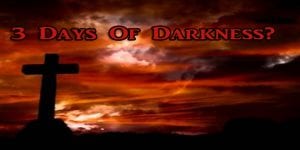 London, England
London, England
At the same time that Jesus is appearing to the nun in 1847, an unknown political theorist, living in exile in Brussels, is writing his social contract called The Communist Manifesto. His name is Karl Marx. His financier and the fellow author of the publication is Friederich Engles. Shortly after the work is published in Feb. of 1848, a wave of unexplainable revolutions breaks out in Europe, the largest in history. The Manifesto presents what is claimed to be an answer to class struggle, and is quickly published in other languages, including English, French and Russian. Meanwhile, socialists in France have set up a government after the fall of Napoleon, but their government is overthrown and many of their members are executed. In Germany, the German Social-Democratic Party is created in 1875 but is deemed a threat to the country and is outlawed four years later by the German government, led by Otto von Bismarck. In 1890, however, it is once again legalized and subsequently fully adopts Marxist principles. It gains one-fifth of the vote in the following elections. In 1883, Karl Marx dies while still living in poverty, but his ideas, captured in The Communist Manifesto, continue to attract adherents. Engles, standing over Marx’s grave at his funeral, declares him the greatest thinker of their age.
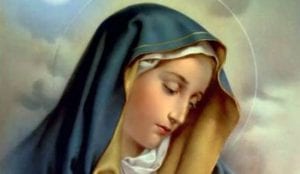 La Salette, France
La Salette, France
High atop a mountain plateau in the French Alps, two shepherd children are pasturing their cows. As they are playing and talking, an extraordinarily beautiful woman suddenly descends from the sky in a luminescent and shimmering globe of light, and stands before them weeping. She tells them that mankind has lost its way and has greatly offended God, and she ultimately gives them the identical message that was given by Jesus to the unknown nun in Tours, France. If the people do not cease offending God, she says, a great famine will break out destroying crops, and many will die of starvation. Ascending into the air again surrounded by the luminescent globe, she departs into the sky. Though the villagers and her pastor immediately believe in their experience, their story is met with skepticism by the French bishops, and little is done to promote the message. The following year, major crops fail and more than one million people die of starvation.
Meanwhile, a man named Leo Dupont has begun spreading devotion to the Holy Face of Jesus, one part of devotion given to Sr. Mary of St. Peter, and thousands of miracles and cures are experienced by those who pray before the image. The French bishops, however, are reluctant to promote any of these supernatural phenomena, and they languish for lack of formal approval.
Then, on Oct. 13, 1884, Pope Leo XIII has an extraordinary vision: he has just finished saying Mass at the Vatican when he is knocked to the floor of his chapel by a supernatural force and hears the voices of Jesus and the devil in conversation. The devil declares in a raspy and guttural voice that he can conquer the world and boasts he will have ultimate victory, but needs more time and power. Jesus, in a pleasant tone, asks how much time and power. The demon states, “Seventy-five to one-hundred years, and more power to those who have given themselves over to my service.” Though he is reluctant to subject his people to such a severe test, Jesus grants the request.
Eastern Russia
In the 1860s a movement called Nihilism develops in Russia. This movement teaches that human institutions and laws are by nature artificial and corrupt, and that the world ultimately lacks meaning or truth. All inherited values are questioned. The Nihilists, after failing to convert the aristocracy, turn to the peasants. In 1881 Alexander II is assassinated by anarchists. The new tsar, Alexander III, decides that Russia can only be saved from the chaotic and subversive influences of Europe by shutting itself off from the West. His most influential adviser, Konstantin Pobedonostsev, believes that Russia should reject freedom of speech and press, the democratic process, parliamentary systems and the formation of constitutions. By 1905, three competing parties have evolved in Russia, one a Marxist. This party, the Russian Social Democratic Labor Party, advocates nothing less than a complete revolution. During the next decade, additional social upheavals erupt in Russia and across Europe. Though Karl Marx stated that Russia is an unlikely early candidate for communism, mainly because it possessed an agrarian economy and was not yet industrialized, it moves forward slowly along this path.
Western Europe
Other parts of Europe experience socialist leanings and anti-religious fervor. The conflict seems to center around two factions: those who wish to retain their personal liberties vs. the new forms of socialist governments, and a conflict between the Catholic Church and atheistic Communism. A religious persecution breaks out during this time in Portugal. Between 1911 and 1916 approximately 1,700 priests and religious are murdered, religious property confiscated and a law passed forbidding public religious ceremonies. Alfonso Costa, the head of state, boldly declares: “Thanks to this law, Portugal within two generations will have succeeded in completely eliminating Catholicism.” School children are obliged to march through the streets carrying banners that read “Neither God nor Religion.”
On May 12, 1914, two weeks before the outbreak of WW I, 22 people mowing fields in Hrushiv, Ukraine, see an apparition of the Virgin Mary. She tells them: “There will be a war. Russia will become a godless country and the Ukraine, as a nation, will suffer terribly for 80 years and will have to live through the world wars [spoken in the plural], but it will be free afterward.” It is interesting to note that Mary speaks of “world wars,” a term that had never been used before to describe a conflict. Two weeks later war breaks out in Europe, and coupled with a tremendous worldwide epidemic of tuberculosis, claims tens of millions of lives. The eastern front during the war suffers greatly: by 1917, more than 1.3 million Russian men have been killed in battle, 4.2 million wounded and an additional 2.4 million captured. Meanwhile, on May 5th, 1917, in the midst of this desperate struggle, Pope Benedict XV issues a public letter to all the faithful with an urgent plea to Mary to help bring peace to the world. Eight days after the pope make his plea, Mary appears for the first time in Fatima…
* * *
Part II
 Fatima, Portugal
Fatima, Portugal
Eight days after the pope makes his plea for Mary’s intercession to bring peace to the world, Mary appears for the first time in Fatima. Three shepherd children in a remote region of Portugal experience the vision of a magnificently beautiful woman who descends from the sky surrounded by a supernatural light and stands suspended at the top of a small tree. In wonder they ask where she is from. “I am from heaven,” she responds, and then requests that the children return on the 13th of each month for five more months. During the following months greater crowds assemble. On the third visit, the “beautiful lady,” as they call her, declares that WW I is going to end, but that if people do not cease offending God, a worse one will break out. “When you see a night illuminated by an unknown light, know that this is the great sign” of the impending future war, she says, as well as persecutions of the Church. In order to prevent the war, she promises the children to return to ask for the consecration — a form of entrustment or dedication — of Russia to her, which she does in a future visit to one of the visionaries in 1929. Russia, she continues at Fatima, will soon become communist, but can be converted and return from its godless ways if the pope, along with the bishops throughout the world, makes this special consecration. On the 13th of October, the final visit, more than 70,000 people witness the Miracle of the Sun, in which for 12 minutes they see the sun spin and “dance” in the sky, and their eyes are not harmed in the least from staring into it. Everyone, even atheists, witnesses the spectacle, and people in the countryside as far away as 30 miles also see the miracle, thus ruling out some form of mass hysteria. It is exactly 33 years to the day after Pope Leo XIII has seen his vision in the chapel at the Vatican.
Moscow, Russia
At the same hour that the Miracle of the Sun is being seen in Fatima, Vladimir Lenin is entering Russia with plans to establish a Communist state. Also at the same time, Bolshevicks in Moscow seize control of the great cathedral of the city, built by one of the tsars, and destroy it. The miraculous icon of Kazan, a prized possession of the Russians and housed in the cathedral, is swiftly removed and taken to safety outside Russia. Less than one month later Russia falls to Communism.
Lenin, the early leader of communist Russia, declares that religion is the opiate of the masses, and works to stamp out religious belief. In early 1918 he dissolves the national constituent assembly, which finalizes the removal of democracy in the country. He quickly begins modeling the country after Marxist principles by nationalizing industries and confiscating land from the wealthy to distribute to the poor.
In 1922 he founds the Union of Soviet Socialist Republics. Lenin is succeeded by Joseph Stalin, a brutal autocrat who follows Lenin’s lead and, according to historians, will ultimately be responsible for 20,000,000 deaths. He believes that religion must be removed in order for the ideal communist society to be constructed. As a result, the government promotes atheism as the state belief system, sponsors atheistic education in schools, endorses anti-religious propaganda, founds atheist institutions like the Society of the Godless, and carries out a terror campaign against religious believers. In the 1930s it becomes dangerous to be openly religious in Russia as churches are destroyed or confiscated and religion is violently persecuted. By 1939, the Russian Orthodox Church claims only hundreds of parishes, down from 54,000 in 1917, and tens of thousands of priests, monks and nuns have been persecuted or killed. Approximately 100,000 people are shot during the 1937-1938 purge. In Spain, Catholics fare no better than the Orthodox in Russia: during the Spanish Civil War, 11,000 priests and nuns are killed by the Communist Loyalists and more than 20,000 churches, convents and schools are desecrated and destroyed. Godlessness never breeds harmony, and the celestial portents Our Lady had warned about indicating a future war were about to be seen in the heavens.
Berlin, Germany
On the evening of January 25th, 1938, an enormous light appears in the sky across the globe, attributed later to be the greatest aurora borealis since 1709. The headline the following day in the New York Times states: “Aurora Borealis Startles Europe; People Flee, Call Firemen.” Though it is normally seen in cold northern climates, the lights are seen as far south as southern Australia and knock out radio transmissions in various countries. The lights are the sign predicted by Mary at Fatima that if the world did not cease offending God, it would suffer through another war. Ten days after the heavenly lights are seen, Adolf Hitler takes command of the armed forces of Germany, and the following month he begins his plan of world conquest by marching troops into Austria. The war that follows is devastating and catastrophic for all sides, as disparate countries are pulled into the conflict. Various nations are ravaged by the war, fulfilling the prophecy by the “beautiful woman” at Fatima. By 1945, however, the tide has turned and the war is nearly over, but with a staggering cost: 50 million dead. The most viciously persecuted are the Jews. Catholics fare better: of the roughly 20,000 priests who were in Germany when Hitler came to power, 14,364 are killed, imprisoned or exiled. The final piece of news from the outside world to reach Hitler in his bunker is of the death of his oldest political ally, Benito Mussolini. The dictator of Italy, fleeing the war with his mistress, had been captured by Italians, executed, hung upside down and then thrown into a gutter. The following day, Hitler swallows a cyanide capsule and dies.
Japan, at war in the Pacific with the United States and her allies, is also losing its battle. On Aug. 6, 1945, the United States drops an atomic bomb on Hiroshima that levels every building within one mile of the center of the blast with the exception of one structure: a parish house, only eight blocks from the center of the blast, in which eight Jesuit priests were living and had prayed the rosary every day. Included in their prayers each day is the supplication, given at Fatima, to “save us from the fires of hell.” They are the only people to survive the atomic bomb within four miles of the epicenter, and while other victims are incinerated in heat that reaches 10,000 degrees, these men do not even lose their hearing. Though scientists tell the Jesuits that they should have lived only 2 minutes due to radiation poisoning alone, they live healthy lives into the 1970s and are ultimately studied more than 200 times by medical doctors.
In an ironic twist of fate, Japan had attacked Pearl Harbor on the eve of the Feast of the Immaculate Conception, the patroness of the United States. The following day, on the feast day itself, the United States declared war on Japan. Now Japan is forced to surrender to the United States and accept the terms of the Potsdam Declaration on the eve of the feast of the Assumption of Mary. The following day, the feast day itself (and also the name of the church in Hiroshima where the Jesuits are miraculously saved), the emperor declares to the Japanese people that they have accepted surrender.
* * *
Part III
Eastern Europe
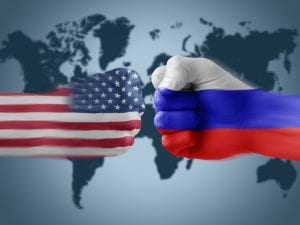 Following the end of WW II, the Soviet Union annexes and occupies Austria with military troops. Rather than fighting, the Austrians begin a massive prayer campaign, the largest in history, and ten percent of the country signs petitions pledging to live by the messages of Fatima, including praying the rosary every day. On the 38th anniversary of the first apparition at Fatima, May 13, 1955, the Soviets suddenly agree to withdraw their troops from the country, the only time the Soviet Union vacates a country without either side firing a shot. At the celebrations in Vienna, every speech attributes the victory to Our Lady of the Rosary.
Following the end of WW II, the Soviet Union annexes and occupies Austria with military troops. Rather than fighting, the Austrians begin a massive prayer campaign, the largest in history, and ten percent of the country signs petitions pledging to live by the messages of Fatima, including praying the rosary every day. On the 38th anniversary of the first apparition at Fatima, May 13, 1955, the Soviets suddenly agree to withdraw their troops from the country, the only time the Soviet Union vacates a country without either side firing a shot. At the celebrations in Vienna, every speech attributes the victory to Our Lady of the Rosary.
In 1950, Pope Pius XII issues the dogma of the Assumption of Mary, stating that after her earthly life, Mary was taken up body and soul into heaven. Four times during that week, while walking in the Vatican gardens, the pope witnesses the identical solar miracle that was seen by 70,000 people at Fatima. By coincidence, he issues this dogma 66 years after Pope Leo XIII hears Jesus grant the devil a century to try the Church.
Meanwhile, communism has continued to spread: in addition to countries in eastern Europe, China, the world’s most populous nation, falls to communism as Mao Zedong establishes the People’s Republic of China in 1949. The same year, western nations form NATO, a group of democratic countries aligned as a defense against the spread of communism. In 1955 the Warsaw Pact is formed of Communist nations, effectively beginning the Cold War. In 1959 Cuba is taken over by Fidel Castro, and he soon declares allegiance to Russia. In 1961 construction of the Berlin Wall begins, and NATO reaffirms its commitment to protecting those who live in West Berlin. Attempts by various eastern European countries to break away from Soviet domination are quashed, including movements in Hungary, Czechoslovakia and Poland. By the late 1970s, nations are spending more than $900 billion per year on armaments while one third of the world languishes in extreme poverty, many people without access even to safe drinking water.
Vatican City
In 1979 a little-known cardinal from communist Poland is elected pope who subsequently condemns both communism and “unbridled capitalism.” The following year a trade union at the Gdansk shipyard in Poland goes on strike demanding western freedoms and democratic elections. Through private conversations and exerting behind-the-scenes pressure, the new pope manages to keep Polish authorities from succeeding in suppressing the strikers. Then, on May 13, 1981, the 64
th anniversary of the first appearance of Mary at Fatima, the pope is shot and nearly killed in St. Peter’s Square by a man with ties to Bulgarian Communism. The following year, the pope visits Fatima and states that Mary “guided the bullet” around his heart and saved his life. The doctor who removed the bullet affirms that the trajectory of the bullet should have passed directly through the heart, but somehow moved around the organ sparing the pope’s life. Mysteriously, the bullet – brought for the event – exactly fits a hole in the base of the crown of the statue of Mary. Seeing the connection between events, the pope asks for the documents in the Vatican archives pertaining to Fatima and reads them, concluding that the consecration of Russia to Mary in union with the bishops of the world would fulfill Mary’s request and end Soviet Communism.
Meanwhile, six children in Communist Yugoslavia have begun having visions of the Virgin Mary, and the Miracle of the Sun, witnessed at Fatima, is now seen almost daily by pilgrims of all nationalities and religions at this site. Communist authorities try to suppress the gatherings and harass the children, even threatening to kill them, but the numerous miraculous healings that take place there only draw larger crowds.
On March 25th, 1984, one hundred years after Pope Leo XIII experienced the vision at the Vatican, Pope John Paul II, in union with the Catholic bishops of the world, consecrates Russia to Mary in a ceremony in St. Peter’s Square. The following year an obscure communist technocrat, Mikhail Gorbachev, is elected the head of the Soviet Union. He makes no immediate statements about changes to Soviet policy. The pope, however, is unsure he has made the consecration properly, and in a letter to the last surviving visionary of Fatima, he asks if the consecration was done correctly and accepted by God. The visionary responds that it has, and that “Our Lady will keep her promises.”
On April 27, 1987, the Virgin Mary appears again near Hrushiv, Ukraine, to a twelve-year-old above a small church. More apparitions follow in the same place, and in the ensuing months, nearly half a million people testify to seeing Mary. A supernatural light that covers the church and surrounding area is even seen on national television. “I have come to comfort you,” says Mary, “and to tell you that your suffering will soon come to an end. Ukraine will become an independent state.” Suddenly and almost without warning, the Berlin Wall falls in November of 1989, and citizens pass freely between western and eastern nations. That same year, Poland, Hungary, Czechoslovakia, Bulgaria and Romania become independent states. On August 24, 1991, the Ukraine also becomes an independent state. Later the same year, Mikhail Gorbachev appears on television for a news conference and announces that he is dissolving the Soviet Union and ending Russian Communism. The date is Dec. 25th, Christmas Day.
Craig Turner, a well-respected journalist and researcher, shares the unmistakable connection between the apparitions of our Blessed Mother at Fatima in 1917 and the fall of communism in Europe more than seventy years later.


